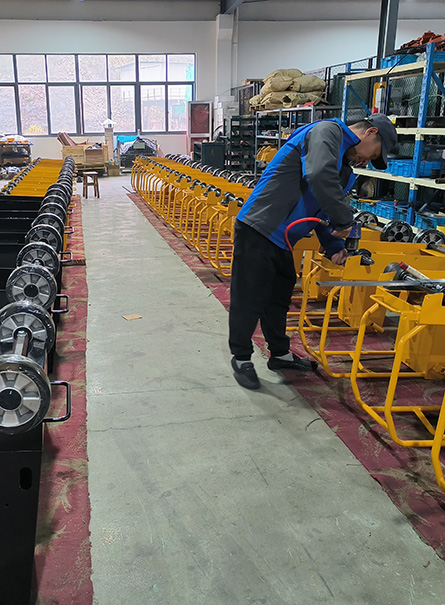How to Troubleshoot A Reversible Plate Compactor
Reversible plate compactors, essential for soil and asphalt compaction, occasionally encounter functional problems that can affect construction projects. These issues primarily pertain to starting up the vibratory plate, which can cause delays and additional costs.
These compactors, powered by gasoline or diesel, utilize their heavy assembly weight and high vibration speed to create compaction force, leading to forward movement. The compaction force correlates with the weight of the plate, with an average vibratory plate frequency ranging from 2500vpm to 6000vpm. It's typical for reversible plate compactors to experience issues after prolonged vibration.
Troubleshooting generally revolves around the engine and belts, with regular checks recommended for optimal functionality. Here are some key maintenance tips and solutions for common issues:
Routine Checks for Reversible Plate Compactors
- Fuel Level: Ensure sufficient gas and oil in the compactor. Replace hydraulic fluid if it appears opaque or discolored.
- Component Inspection: Secure all loosened parts like the spark plug, air filter, and belt due to vibration.
- Plate Cleaning: Regularly clean the compactor plate to prevent dirt buildup. Avoid pressure washers to protect the engine.
- Fuel Tank Maintenance: Drain the fuel tank before storing or transporting, especially after heavy or high-temperature use.
- Battery Maintenance: Check for loose connections and apply electrical grease to the poles for better connectivity.
Common Issues and Solutions
A. Engine Start-Up Problems:
Follow the Operations Manual for starting procedures.
Check the engine switch, oil and gas levels, fuel valve, and choke.
Replace or clean the air filter if clogged.
Ensure the compactor is on a level surface for accurate oil sensor readings.
B. No Vibration When Running:
Adjust the handle lever from “MIN” to “MAX”.
Inspect and fix or replace the drive belt.
Check and adjust the oil level in the exciter box.
C. Engine Power Issues:
Use 91 Octane Gas and clean SAE 10W-30 oil.
Clean or change the carburetor if needed.
Inspect and maintain the clutch and drive belt.
D. Difficulty in Control or Uneven Compaction:
Regulate throttle speed and assess the ground surface.
Replace damaged or loosened rubber isolators and vibration mounts.
E. Reduced Performance:
Check and adjust the throttle.
Use a tachometer to set the correct engine speed.
Clean or replace a clogged air filter.
F. Challenges in Compacting Soil:
Moisten overly dry soil.
Perform a soil moisture test to determine compaction readiness.
Maintaining Your CompactorEnsuring diligent maintenance of your reversible plate compactor is pivotal for its longevity.
Adhering to these upkeep suggestions will aid in the seamless operation of your equipment, particularly during peak usage periods.
Key components often susceptible to issues in plate compactors include the engine, drive belt, and spark plug.
The quality of the engine significantly influences the durability and reliability of your reversible plate compactor. Brands like Honda, Kohler, Subaru, and Tomahawk Power, recognized for their superior materials, ensure extended product lifespan. These brands also offer the convenience of widespread service options within the United States. On the other hand, globally sourced engines might be more economical but tend to have lower quality standards, potentially leading to future engine problems and operational disruptions at job sites.
Gaining proficiency in standard troubleshooting practices simplifies the task of maintaining your reversible plate compactor. Understanding the engine type and its associated manufacturer warranty and quality can be instrumental in making knowledgeable choices for maintenance and service.


